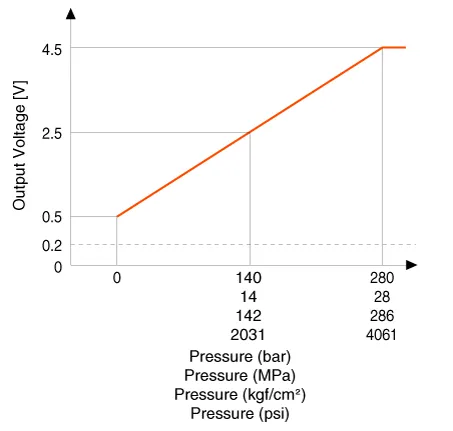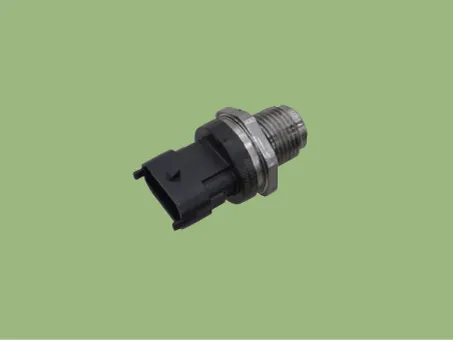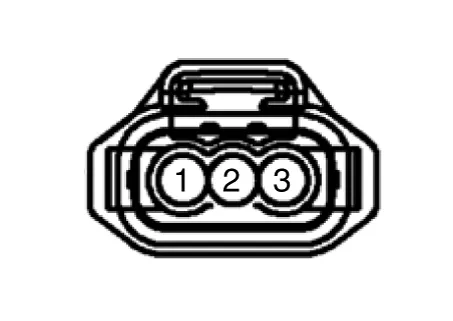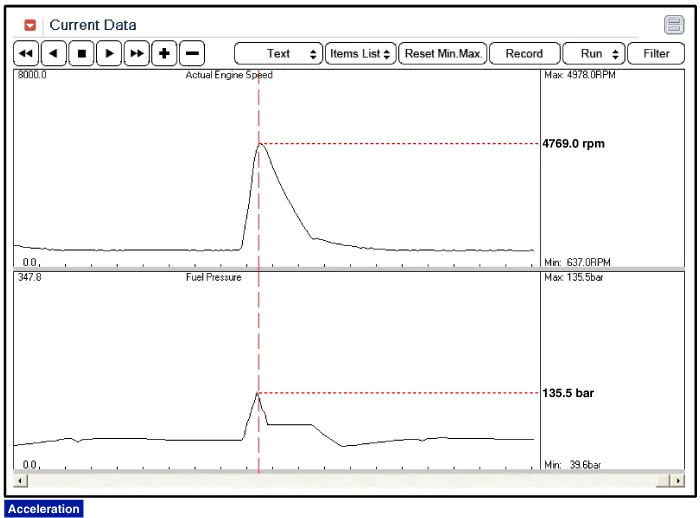Kia Stinger CK: Engine Control System / Rail Pressure Sensor (RPS)
Specifications
| Specification |
|
Pressure |
Output Voltage (V) [Vref=5V] |
|
|
bar |
[MPa (kgf/cm², psi)] |
|
|
0 |
0 (0, 0) |
0.5 |
|
140 |
14 (142, 2031) |
2.5 |
|
280 |
28 (286, 4061) |
4.5 |

Description and operation
| Description |
Installed on the delivery pipe, the Rail Pressure Sensor (RPS) measures the instantaneous fuel pressure in the delivery pipe. The sensing element (semiconductor element) built into the sensor converts the pressure to voltage signal. By using this signal, the ECM controls the correct injection amount and timing and adjusts the fuel pressure with the fuel pressure regulator valve if the actual pressure calculated by the RPS output signal is different from the target pressure.

Schematic diagrams
| Circuit Diagram |

| Harness Connector |

Repair procedures
| Inspection |
| 1. |
Connect the KDS on the Data Link Connector (DLC). |
| 2. |
Measure the output voltage and fuel pressure of the RPS at idle and various engine speed.
|
||||||||||||||
| Removal |
| 1. |
Release the residual pressure in fuel line. (Refer to the Fuel Delivery System - "Release Residual Pressure in Fuel Line") |
| 2. |
Switch "OFF" the ignition and disconnect the negative (-) battery terminal. |
| 3. |
Remove the intake manifold. (Refer to Engine Mechanical System - “Intake Manifold”) |
| 4. |
Remove the delivery pipe foam (A).
|
| 5. |
Disconnect the rail pressure sensor connector (A), and then remove the sensor (B) from the delivery pipe.
|
| Installation |
|
| 1. |
Install in the reverse order of removal. |
Troubleshooting
| Signal Waveform |

Other information:
Kia Stinger (CK) 2018-2023 Service Manual: Ignition Coil
Description and operation Description An ignition coil is an induction coil in an engine's ignition system which transforms the battery's low voltage to the high voltage needed to create an electric spark in the spark plugs to ignite the fuel. Coils have an internal resistor while others rely on a resistor wire or an external resistor to limit the current flowing into the coil from the battery 12 V supply.Kia Stinger (CK) 2018-2023 Service Manual: Power Tailgate Latch
Repair procedures Removal 1. Disconnect the negative (-) battery terminal. 2. Remove the tailgate trim. (Refer to Body - "Tailgate Trim") 3. Disconnect the power tailgate latch connector (A) and power closing unit connector (B). 4.Categories
- Manuals Home
- Kia Stinger Owners Manual
- Kia Stinger Service Manual
- New on site
- Most important about car






